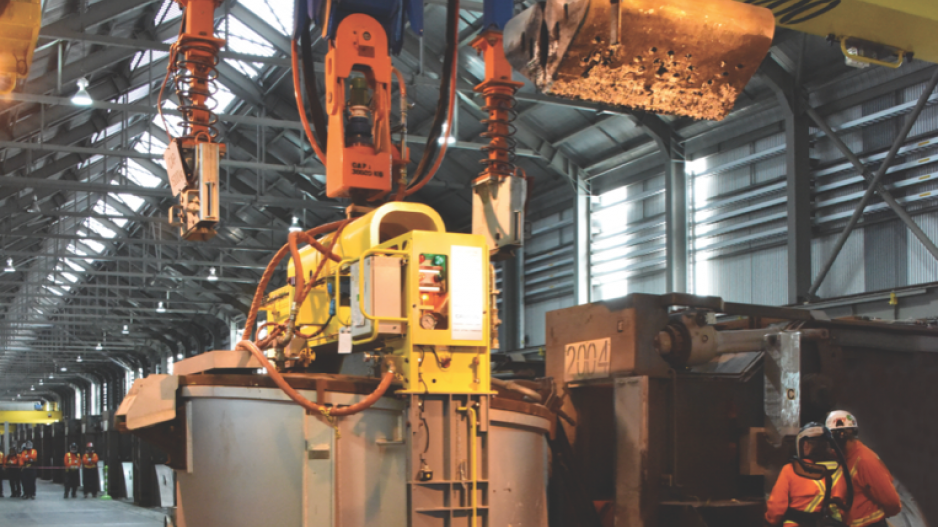When Gervais Jacques was invited to speak to the Greater Vancouver Board of Trade last week about the $6 billion modernization of an aluminum smelter in Kitimat in 2014 and 2015, the context of the discussion was free trade with the U.S.
The U.S., after all, is a major customer for B.C. aluminum.
But Jacques’ talk ended up sounding more like a promotion for large-scale hydroelectricity for heavy industry and manufacturing – something Jacques called “the Canadian advantage.”
It was B.C.’s hydro power potential that drew Alcan to B.C. to build the Kemano hydroelectric dam, completed in 1954, and aluminum smelter. It was at the time the largest private investment made in B.C. With a workforce of 1,000, the smelter is Kitimat’s largest employer.
Between 2014 and 2015, the smelter again saw one of the largest private investments made in B.C. in recent years when RioTinto (NYSE:RIO) spent $6 billion modernizing it. The investment in the Rio Tinto aluminum smelter increased its production capacity 50% and reduced its emissions 50%.
The new smelter has been in operation for one year.
“The combination of technological innovation and clean-renewable, reliable hydro power here in British Columbia allows us to produce aluminum with one of the lowest carbon footprints in the world at Kitimat,” said Jacques, who is managing director of Atlantic operations for Rio Tinto. For most other metals, smelting is done through heat. The metals are literally melted.
Aluminum smelting uses electrolysis, which requires massive amounts of electricity. Thanks to its hydro power and technological upgrades, the Kitimat smelter now produces what Jacques called some of the “lowest-carbon aluminum” in the world.
“It create less than one-third the industry average of carbon for every tonne produced,” Jacques said. “The lion’s share of aluminum is produced in countries that depend on fossil fuels.”
There are 10 aluminum smelters in Canada: one in B.C. and nine in Quebec, which also has large-scale hydro power. But Canadian aluminum producers are facing stiff competition from China, which has 180 smelters – most of them supplied with coal power – and now produces half of the world’s aluminum, according to the Aluminum Association of Canada. The increased production from China threatens to push aluminum into oversupply and drive prices down. Jacques said it’s therefore important for Canadian producers to leverage their advantages to remain competitive.
One of Rio Tinto’s advantages is that there is a limited supply of “low-carbon” aluminum being produced in the world.
“Countries such as Canada, with its supply of hydroelectricity, is definitely there to raise the bar,” Jacques said.
“Increasing demand for low-carbon products and regulations that encourage their use is one opportunity we expect to see emerge for our aluminum operations. We are already starting to see our customers’ customers become more discerning than ever. They want to know where and how products are made and what impact they have on the environment.”
Rio Tinto's Kitimat smelter now has an annual capacity of 420,000 tonnes, 100% of which is exported. •




